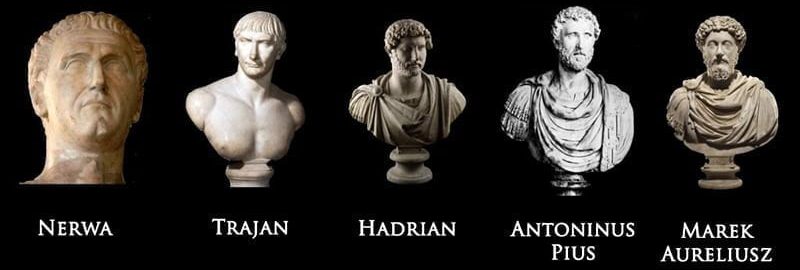The so-called “five good emperors” – it was the time of the reign of the five Roman emperors who ruled in the years 96-180 CE and they were distinguished by stable and sound reign.
This group included:
- Nerva (ruling in the years 96-98 CE)
- Trajan (98-117.e).
- Hadrian (117-138 CE)
- Antoninus Pius (138-161 CE)
- Marcus Aurelius (161-180 CE, co-ruling with Lucius Verus in the years 161 -169 CE)
Succession in the age of “five good emperors” followed peacefully – each emperor adopted a successor. The period of their reign in the first and second century CE was considered the golden age of a Roman state.
Only the first ruler was elevated to the throne as a result of the murder of Domitian. His successors were adopted and successively took power as successors in the aura of peace and stability.
The time of reign of the so-called Nerva–Antonine dynasty (96-192 CE) – except for the rule of its last member Commodus – it is the period of Roman power. The emperors ruled the territory from North Britain to Dacia; from Arabia to Mesopotamia. The empire was consolidated, the defense was well prepared, and the administration system was reasonably implemented. During the rule of the discussed “five” there was also a clear centralization of power and an unofficial departure from the “duality” in the government, which was used in the first century CE thanks to Augustus. The Senate was deprived of any tools and offices that would allow it to influence the political scene.
After the death of Marcus Aurelius in 180 CE, the Empire quickly began to plunge, resulting in a civil war. The murder of Commodus in 193 CE started a competition for power, which was won by Septimius Severus. The new dynasty’s government began – Severan.







